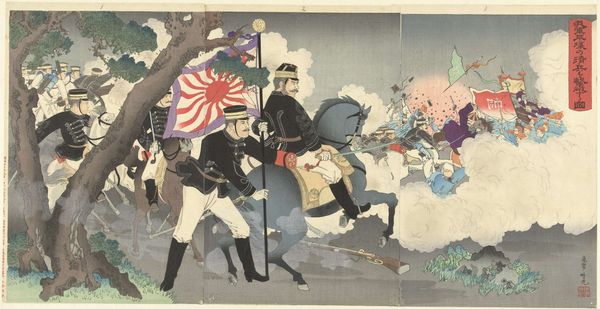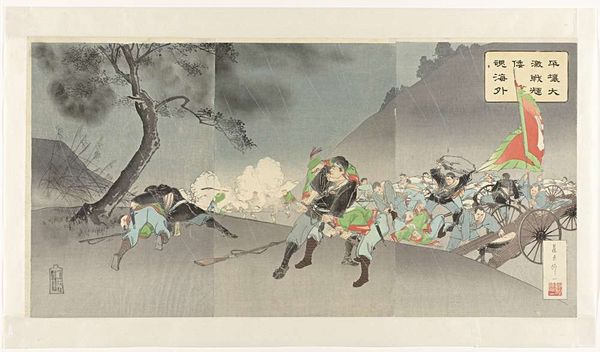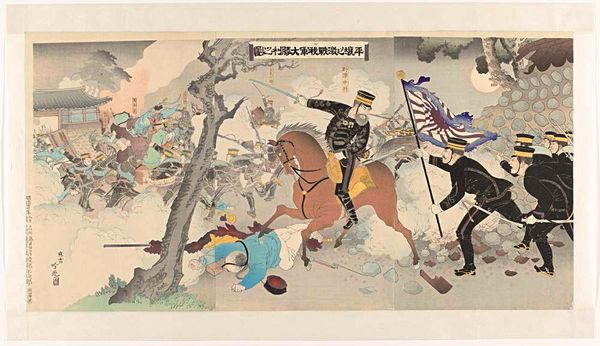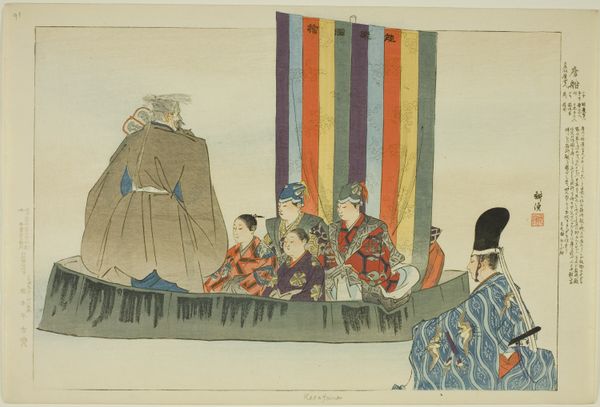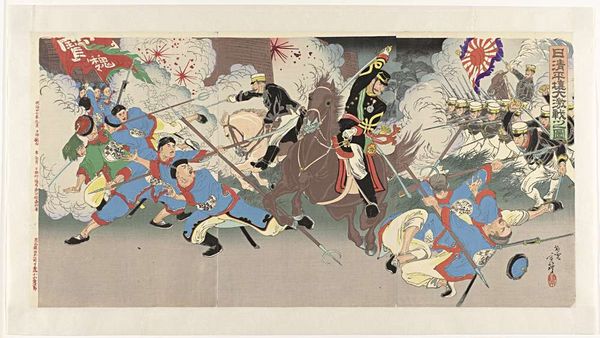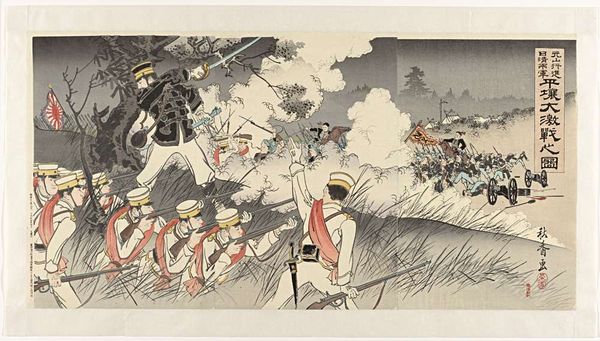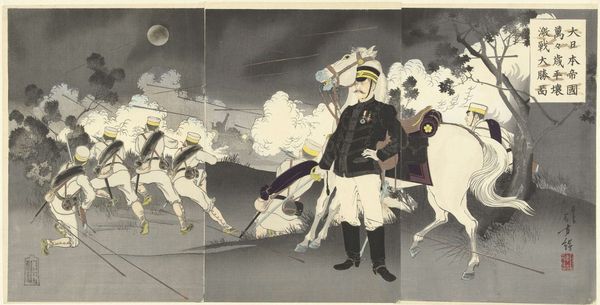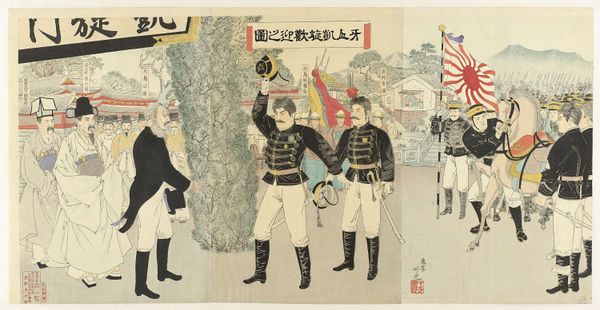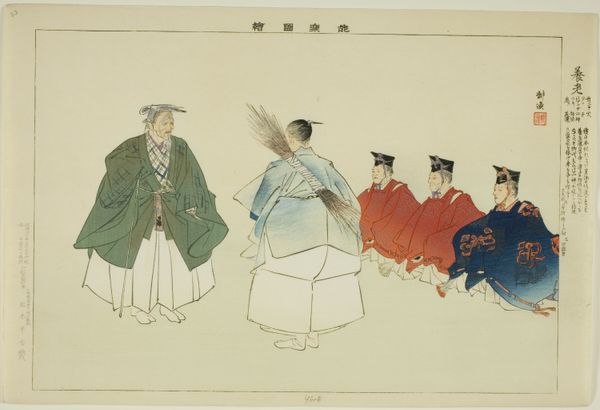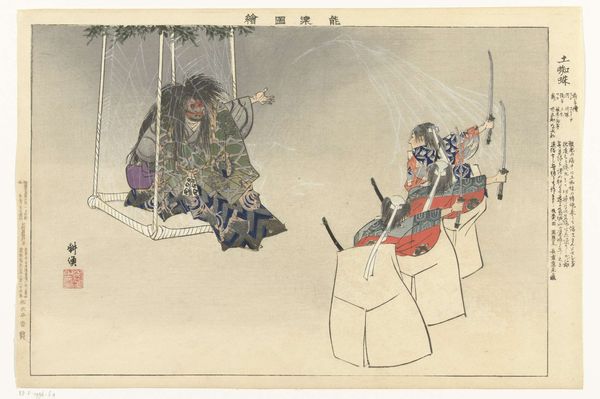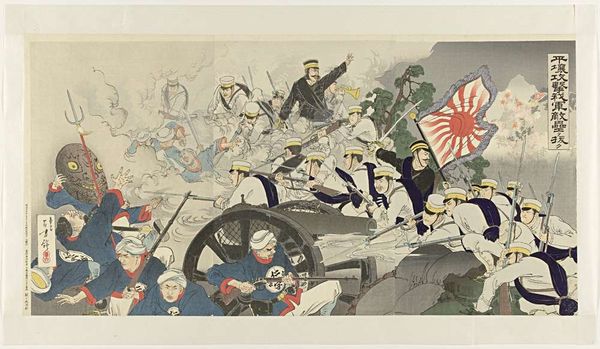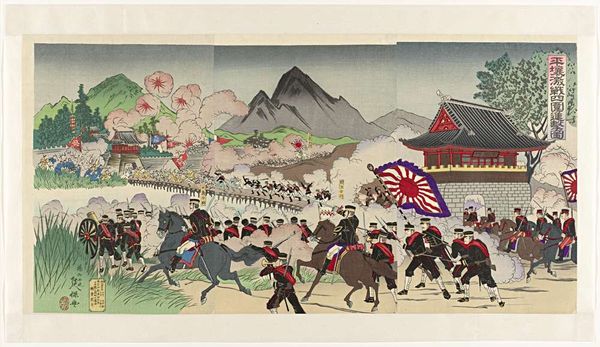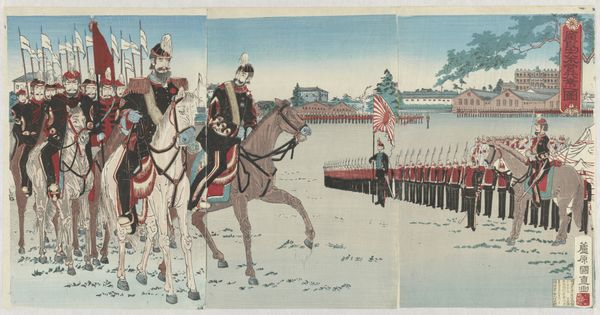
Levend gevangen Chinese generalen bij de overwinning van Pyongyang 1894
0:00
0:00
Dimensions: height 365 mm, width 720 mm
Copyright: Rijks Museum: Open Domain
Curator: Standing before us, we have "Living Captive Chinese Generals at the Victory of Pyongyang," a print created in 1894 by Migita Toshihide, part of the Rijksmuseum's collection. What strikes you immediately about this work? Editor: Well, immediately, it's the striking contrast in body language. The rigid formality of the victorious Japanese officers, seated and standing, sharply juxtaposed with the chaotic submission of the Chinese generals. It's a study in controlled power versus disarray. Curator: Indeed. The print comes from a series depicting the First Sino-Japanese War, and what we see here is not just a capture, but a performance of dominance intended for public consumption back in Japan. Editor: The artist uses linear perspective effectively, drawing the eye from the defeated generals in the foreground to the imposing line of soldiers in the back, all under the watchful gaze of the officers and a Japanese flag billowing near their tent. Note how the colors also guide our eye. Curator: Precisely, it's a potent blend of Ukiyo-e artistry deployed as war propaganda. The detailed rendering of the uniforms, for example, glorifies Japanese military might. These prints played a vital role in shaping public opinion during the war. Editor: I find the faces of the defeated generals particularly fascinating. There’s a certain stylized exaggeration in their expressions of distress. The robes they wear introduce a very elegant and dynamic touch due to their pastel colors and fluid designs. It all serves the purpose of amplifying their submission. Curator: And it worked. These prints were widely circulated, fueling patriotic fervor. Yet, viewed today, we might also consider the complex ethical dimensions of celebrating victory through the humiliation of one's enemies. Editor: Agreed. The visual rhetoric is undeniable, a masterclass in portraying power dynamics through composition, color, and carefully orchestrated expressions. It encourages the viewer to celebrate the victory and feel contempt towards the defeated ones. Curator: Toshihide masterfully employs the ukiyo-e aesthetic to deliver a powerful message, offering insight into the complex relationship between art, war, and national identity. Editor: It really reveals how formal artistic choices can function in conjunction with powerful socio-political contexts, doesn’t it?
Comments
No comments
Be the first to comment and join the conversation on the ultimate creative platform.
